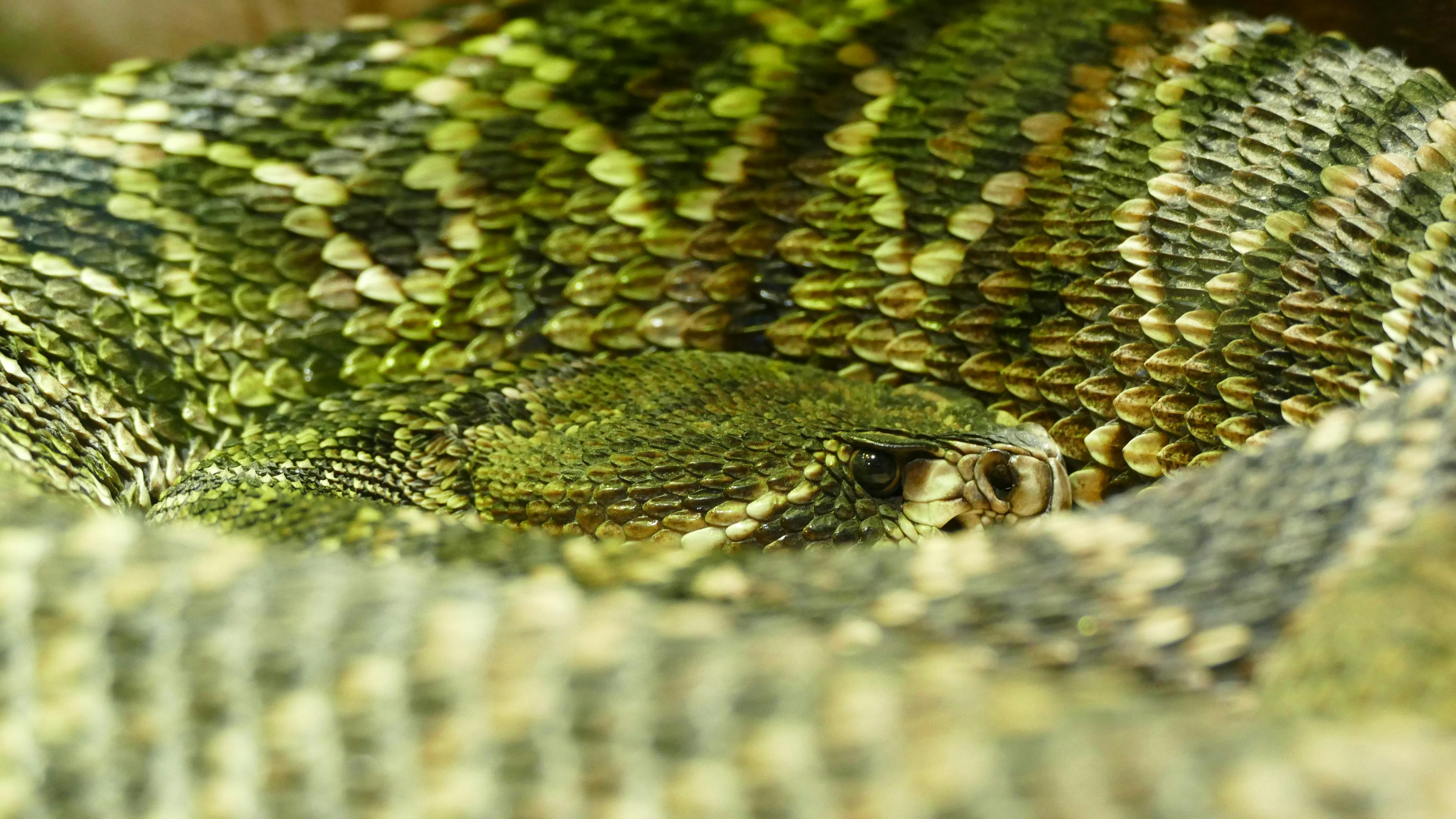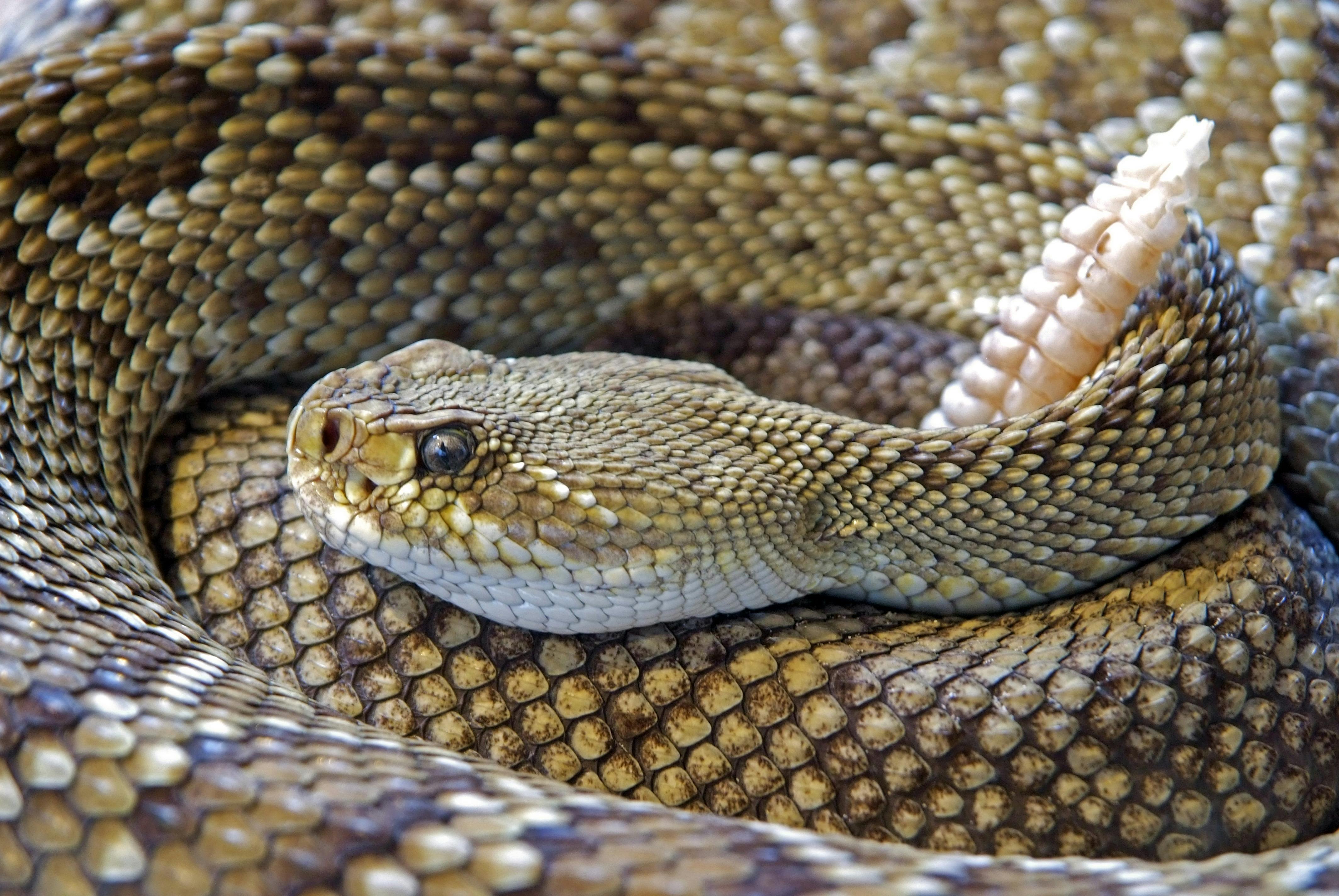Contents
Where Do Rattlesnakes Live?
Rattlesnakes are found in many different habitats, including deserts, rocky slopes, grasslands and even forests. They are native to the United States, Mexico and parts of Central and South America. Rattlesnakes prefer areas with plenty of cover such as rocks, logs or thick brush. This helps them to hide from predators as well as prey on small animals like mice or voles. They are also able to climb trees and can sometimes be seen basking in the sun on a tree branch.
Rattlesnakes can also be found living in suburban and urban areas. They often take shelter in yards or gardens where they are able to find food and protection from predators. In cities, rattlesnakes may seek refuge in abandoned buildings or underneath decks and porches where they can remain undisturbed for long periods of time.
Rattlesnakes also inhabit many different kinds of water bodies such as rivers, streams, lakes and ponds. They may bask on logs or rocks near the water’s edge or swim across open water in search of food or shelter. During colder months they will often seek warmth by hiding beneath rocks or logs near the water’s edge.
Rattlesnakes can be found throughout much of the United States as well as parts of Mexico and Central and South America. They prefer warm climates but can also survive in colder climates with proper shelter and protection from predators. Wherever they live, rattlesnakes play an important role in controlling rodent populations and helping to maintain a healthy ecosystem.
What Do Rattlesnakes Eat?
Rattlesnakes are carnivorous reptiles that feed primarily on small mammals such as mice, voles, and shrews. They also eat birds, lizards, and other snakes. Rattlesnakes tend to hunt primarily at night in order to take advantage of the cover of darkness. They will also hunt during the day if they need to in order to find food.
When hunting, rattlesnakes use their keen sense of smell to locate their prey. They then use their long tongue to detect the scent of their prey and follow it back to its source before striking with deadly accuracy. Once they have caught their prey, they will swallow it whole.
In addition to small mammals, rattlesnakes will also consume insects, eggs, and amphibians such as frogs and salamanders when available. This varied diet ensures that these reptiles have enough energy and nutrients to survive in their harsh environment.
It is important to remember that rattlesnakes are not scavengers and do not typically feed on rotting carcasses or carrion like some other animals do. While they may occasionally consume a deceased animal if it is available, this is not a primary part of their diet.
How Long Do Rattlesnakes Live?
Rattlesnakes are one of the most recognizable and feared reptiles in North America. They are well-known for their characteristic rattling sound and their venomous bites, which can cause serious injury or even death. But how long do rattlesnakes live?
The answer to this question varies depending on the species of rattlesnake, but in general, most species have a life span of approximately 10 to 20 years. The oldest known rattlesnake lived to be 26 years old. In captivity, some species may live longer than in the wild due to being better protected from predators and having access to regular food sources.
The age of a rattlesnake can be determined by counting the number of segments on its rattle, which is made up of hard keratinized material that accumulates over time each time the snake sheds its skin. Each segment on the rattle indicates one shed, with the first segment being added when the snake is born. The size and shape of a rattle can also give an indication of age, as larger rattles are typically found on older snakes.
The life expectancy of a rattlesnake is also affected by its environment and habitat. Snakes living in areas with mild winters are likely to have longer lifespans than those living in colder climates due to their ability to survive lower temperatures for longer periods of time. Additionally, snakes living in areas with abundant food sources and fewer predators tend to live longer than those living in harsher environments where resources are scarce and predation is frequent.
In conclusion, while there is no single answer as to how long do rattlesnakes live, they typically have a lifespan between 10-20 years and may potentially reach 26 years under ideal conditions with plenty of food and protection from predators in captivity or milder climates in the wild.

How Are Rattlesnakes Different From Other Snakes?
Rattlesnakes are a type of snake that is easily distinguished from other snakes due to their characteristic rattling sound. This sound is made by a special tail section known as the rattle, which consists of a series of hollow, interlocking segments made of keratin. When the snake shakes its tail, the segments rub together to create a buzzing or rattling noise. This noise is used by the snake as a warning signal to potential predators or prey. Rattlesnakes can also be identified by their distinctive scales and triangular head shape.
In addition to their unique rattle, rattlesnakes are also different from other snakes in terms of their diet and behavior. Rattlesnakes typically feed on small mammals such as mice and rats, while other snakes may eat frogs, lizards, or insects. Rattlesnakes also have an aggressive defensive posture when threatened, standing up in an S-shape with their rattles shaking before striking out at predators. Other snakes generally flee when threatened rather than stand and fight.
Finally, rattlesnakes inhabit different areas than many other snakes. While some species of non-venomous snakes can be found in a variety of habitats, most venomous species are native only to warm climates with dry environments such as deserts or scrublands.
Are Rattlesnakes Venomous?
Yes, rattlesnakes are venomous. They produce a neurotoxin that can cause serious injury or even death in humans and other animals. Rattlesnakes are found throughout the United States and in some parts of Canada and Mexico. While the amount of venom produced by a rattlesnake varies with species, they all have enough venom to deliver a potentially lethal dose if they bite a human or other animal.
Rattlesnakes use their venom as both a defense mechanism and to paralyze prey. The venom is injected into their victims through hollow fangs located at the front of the mouth. Once injected, the venom quickly spreads through the bloodstream, causing symptoms such as swelling, numbness, nausea and breathing problems. In severe cases, it can lead to paralysis or death. Fortunately, an antivenom is available that can counteract the effects of rattlesnake venom if administered soon after the bite occurs.
While rattlesnakes typically do not attack humans unless provoked or threatened, it is important to be aware of their presence when out in nature. If you encounter one, it is best to back away slowly and give it plenty of space. Avoiding areas where rattlesnakes are known to live is also advisable. Wearing protective clothing such as heavy boots and long pants can help reduce your chances of being bitten if you find yourself in an area where rattlesnakes may be present.
What Kind of Threats Do Rattlesnakes Face?
Rattlesnakes are facing a variety of threats due to their declining population. Habitat destruction and fragmentation, vehicle collisions, and persecution by humans are all contributing to the decline in rattlesnake populations.
Habitat destruction is one of the biggest threats that rattlesnakes face today. As more land is developed for residential or commercial use, rattlesnakes lose their natural habitat and vital food sources. Fragmentation of habitats, which can occur from roadways, farms, or other development projects, can also cause difficulty for rattlesnakes to move between different areas to find food or mates.
Vehicle collisions with snakes can also be a major problem for rattlesnake populations. Roads have cut through natural habitats and put snakes at risk of being run over by cars and trucks. In addition, people often try to run over snakes they see on the road out of fear or simply because they don’t want them there.
Persecution by humans is another major threat that rattlesnakes face. People often kill them out of fear or hatred without realizing the important role they play in balancing ecosystems. They are also illegally poached for their skins and body parts which are used in traditional medicine or sold as souvenirs.
Overall, these threats have caused many species of rattlesnakes to become endangered or threatened with extinction in some areas. It is important that we take steps to protect these animals so that future generations can enjoy them in their natural habitats.

Conclusion
Rattlesnakes are a fascinating species of animal that has adapted to a wide range of habitats. They are predators, but also play an important role in controlling the populations of their prey. They have evolved unique defensive mechanisms to protect themselves from potential predators, and their iconic rattle is an effective warning system. These animals are also popular among many people who keep them as pets or exhibit them in shows and educational programs.
Rattlesnakes are an important part of many ecosystems, and they should be respected and protected. Knowing more about these animals can help us appreciate them and understand how to coexist with them in order to ensure their future survival.
With their impressive adaptations, it’s not hard to see why rattlesnakes have become some of the most feared creatures on the planet. But despite this reputation, they are also important members of our natural world, providing crucial ecological services that help keep other species balanced in nature.

0 Comments